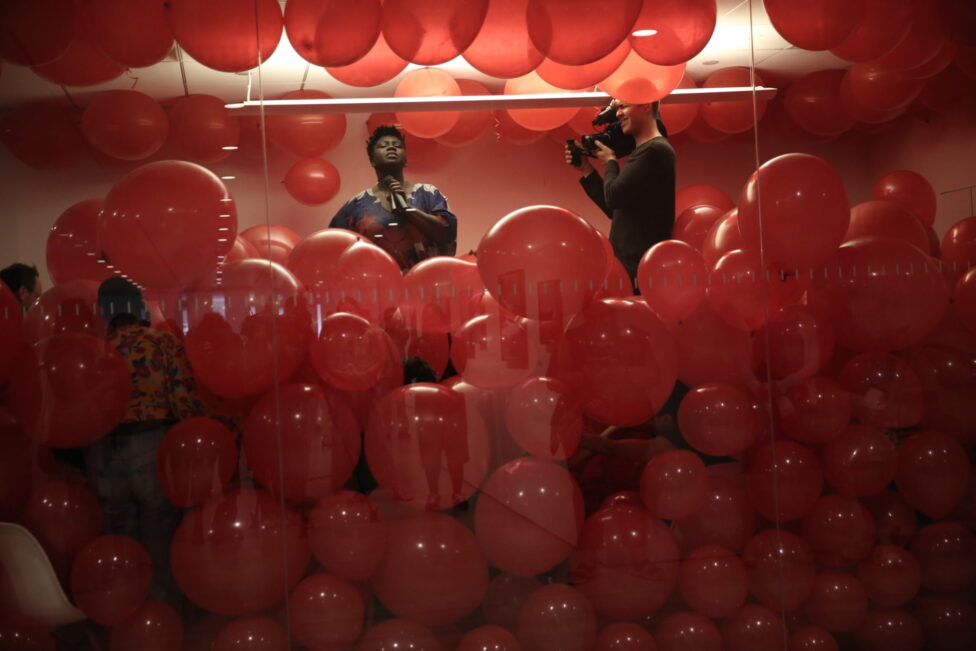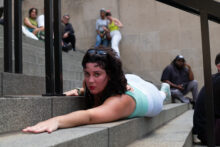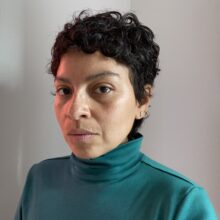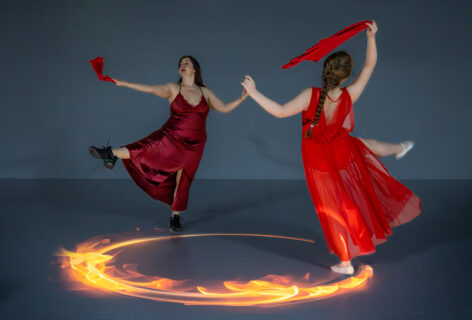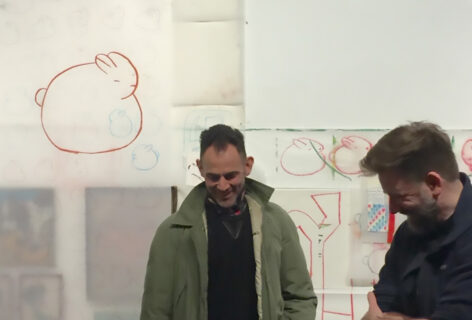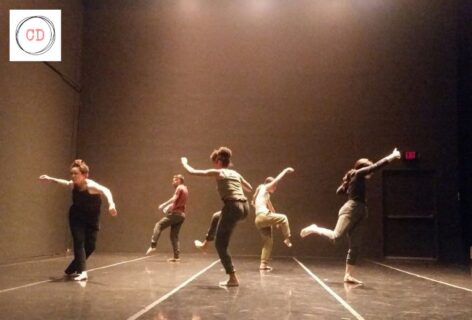Greta Hartenstein: Strategy was a big part of my process of working with each of you and there was a lot of strategy involved in thinking about how to make space for you in the Biennial. When Jane (Panetta) and Ru (Hockley) approached me, the invitation was a hurdle at first. I’d worked on previous biennials in a supporting capacity, I knew that curators typically try to take like a litmus test of what’s happening in American art and then define that with their curation. I didn’t know if Jane and Ru wanted me to follow that same mode of selecting artists. I hoped to approach my curation as an individual, to bring artists I was interested in. Turns out they wanted to see what I was seeing, what I was drawn to, they wanted my personal point of view. This gave me permission to trust my instincts and my instincts lead me to the three of you. My instincts also lead me to a strategy involving the considerations of space, time and viewership. It was important for me to make a separate platform for each of you, to consider each of you individually and what your needs may be rather than clump you all together in a performance program. A performance program or showcase is closer to where you typically begin as performers, it is not a place to highlight your work at this stage of your career. I focused on your work and figured out how best to have it live in the museum while also considering strategies for working in museums that hadn’t been done before. I wanted to provide you with a way to think about your work in a different capacity. I didn’t want it to feel like cut and paste. I wanted you to really be able to take up space, to not feel like an addition or insertion. We started looking at the space and thinking about the relationships and juxtapositions we might create. Allowing the environment and history of the neighborhood to seep into the work and into the performance. We really did take up space. Autumn’s Sanity TV in the museum offices and trustee room, Mariana’s Futurity in the lobby, nibia’s objetos indispuestos, inauguraciones suspendidas o finales inevitables para un casi-baile on the streets outside the building and in a gallery, as well as the theater. The second element of my strategy was timing. nibia’s was three days in a row, Mariana had a week between each show, and Autumn about a month. These different time frames allowed each of you to stretch your work, each in a different way. The other aspect of the strategy was viewership. We were dealing with museum goers and people coming in off the street not knowing what is happening, so we were dealing with that specific attention span. Alternatively you have performance ticket buyers, who have selected and committed to engaging with this performance or this artist specifically, a captive audience. When considering all of these conditions of the museum, we found spaces and approaches to help bolster the work, rather than trying to make the work fit into an environment that’s not supportive.
I’m curious what how each of you approached working within the Whitney museum versus working within a theater space. I wonder if the approach you’ve used here is similar to the way you approach your work in other museums or institutions or different?
nibia pastrana santiago: I typically make work in Puerto Rico. There, conditions for performance and dance are precarious and access to theater is complicated, this has led me to develop my practice outdoors. Recently, I have worked in the San Juan Bay area. I’m interested in the notion of ports and how that territory is choreographed to manage merchandise (which is one of the most evident manifestations of the colonial condition in Puerto Rico). I do not think that I use space as a strategy. I just don’t have any other options. The strategy is figuring out how I use my craft as a strategy within the spaces I have chosen to work in. When we had our initial conversation about the invitation to the Whitney Biennial, I got excited because it was a new space to apply my craft: the New York City port area right outside of the Whitney. Because I don’t use theater or traditional spaces to make my work, I didn’t feel a challenge to develop my work in this way. I was operating in the same way as when I use public space, landscape, viewership and chance within the streets and the history of San Juan. But this new environment shifted my work and my experience of the work. I do sometimes wonder why I continue to insist on this risky temporal structure, but the structure is what is interesting.
GH: Another strategy with your work was thinking about how to make something where the museum doesn’t need to know what the performance is going to be until it happens. That is usually a roadblock that I come up to when I am working in institutions that deal with objects, they always want to know what the thing is first.
NPS: I wanted to understand surveillance in this city. I wanted to understand how the body, traffic, and movement of the vehicles is choreographed… and so there’s a question about safety. There’s something about me coming to New York City already knowing the history of “If You See Something, Say Something” and all of these systems in place that make the citizen or the non-citizen responsible for looming risk or violence. I’m interested to see how placing my body in a horizontal position in a place that it is not supposed to be affects the viewer. What happens when I place my body in these zones? Streets near the Whitney, near all these fences, cars, and all these billboards; urban elements that tell our bodies how to behave. And then, all of that in relation to the visitors in the museum, and how they move and how they are conditioned to behave. It creates a specific audience behavior. As for Autumn in the trustee room, how does that work, how will that audience behave?
AK: My intention is to invite a number of board members and trustee members to the performance. The room has 38 seats and, ideally, they would occupy 10 of them. I don’t want the board and trustee members to be the majority but enough of them present to create a presence around the table. There will be a seat at the table for every audience member. This seat is for you and we need you to participate in conducting this meeting. Meanwhile, I’ll be in the middle of tables rolling around on a chair to different spots and engaging with everyone in the room. The space has very clear limits. I am interested in limitations, but not the limitations presented to me by the institution. I want to push past what an institution thinks its limitations are. I use improvisation and the limitations of the space to work through my piece. Improvisation needs boundaries. That’s a structure strategy of mine; where and when to respond to boundaries.
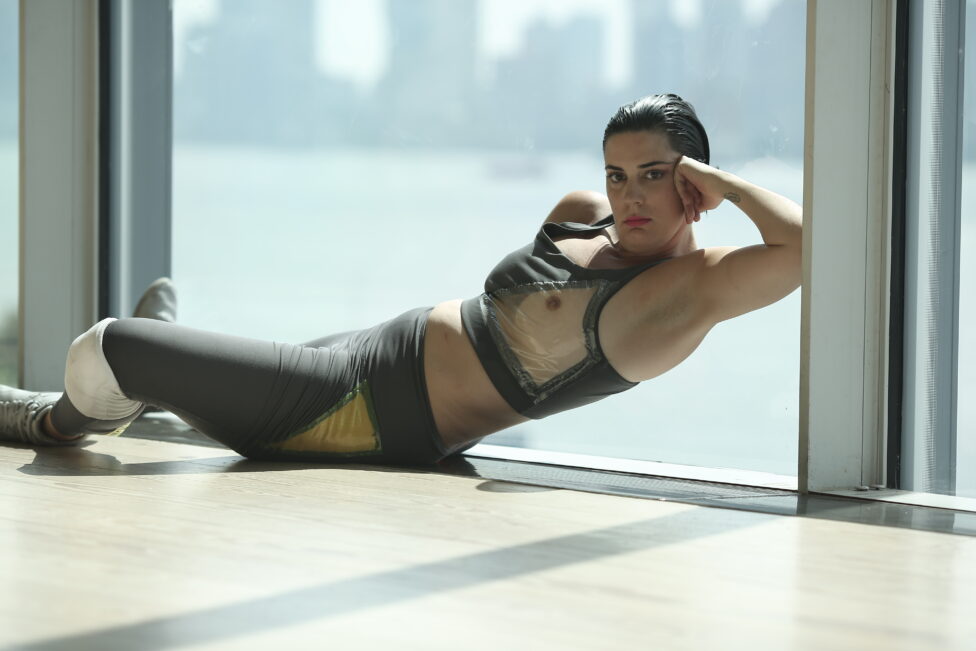
nibia pastrana santiago, June 7, Whitney Biennial, 2019. Photograph © Paula Court
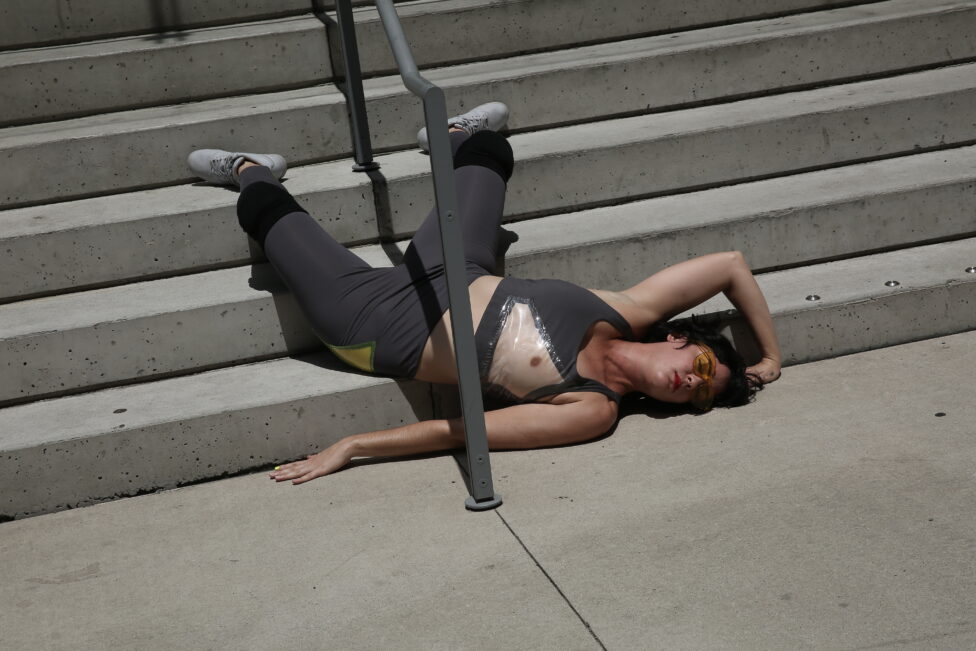
nibia pastrana santiago, June 6, Whitney Biennial, 2019. Photograph © Paula Court
GH: Mariana, let’s hear about your strategies in the lobby.
MV: One way for me to think about this is to compare it to other spaces where my work typically exists – the black box. Within the black box, I don’t have a traditional approach. I am not thinking about the way the audience’s bodies or my body have to be positioned. I almost always disintegrate the fourth wall. There is usually a moment, early on, that tells the audience we are in it together. That partnership becomes really apparent. I acknowledge their presence, I say “Hey” and they’re like “no one talks to me when I’m in an audience” it is confusing for them and then it is fine and then the show just goes on from there. For my piece in the Biennial, my strategy was to not rely on any walls. The work just needed a body and floor for that body and a light on the body and then an audience to witness that body. Whose body does the work? My body does the primary work, but conceptually we all do it together, because of everyone’s presence and that togetherness. The strategy is in how we relate to one another. The strategy was in the decision to use the lobby, it let me take up a lot of space, the sunset was the lighting, and the audience could see me from every point in the room. Everyone in the audience had a front row seat and that is exciting. Distilling what my performances require, it is clear that I need a front row, I need a participatory feeling group of people, I need an inclusive feeling, I need my body, I need a floor and I need a light. Those are my basic needs and they were being met by the museum.
GH: Your research for this piece was grounded in the queer communities and queer bodies that occupied the area around the Whiteny in the 60s and 70s. From our first row seats positioned in the lobby at street level, we could see that area throughout your performance..
MV: I was looking out the window, I was looking into the history of these lives and of this area and the water beyond all of that, and the work became rooted in sight lines. What I was looking at was the lack of the remnants of that time. Very little of it is left. It was destroyed and it was never fully archived. You can’t archive experience. So I filled in the memory of what used to be with fictional characters and experiences rooted in historical timelines. The stories are based on a real time that was once there but it is all told through a fantastical being. This fantasy being is like a silhouette of a person. There’s a body in motion and it’s kind of like an amorphous presence. An amorphous presence in a black unitard who’s feet are roller skates.
GH: Had you wanted to make a piece on roller skates before and then this opportunity felt like the right one?
MV: No, the opportunity made me want the roller skates because I wanted to take up the most space. How do I move the fastest? How do I cover the most ground? The way to move faster is to roll or fly. I didn’t want to run. I wanted to move through space and time at a quick pace to be able to look back. A retro future.
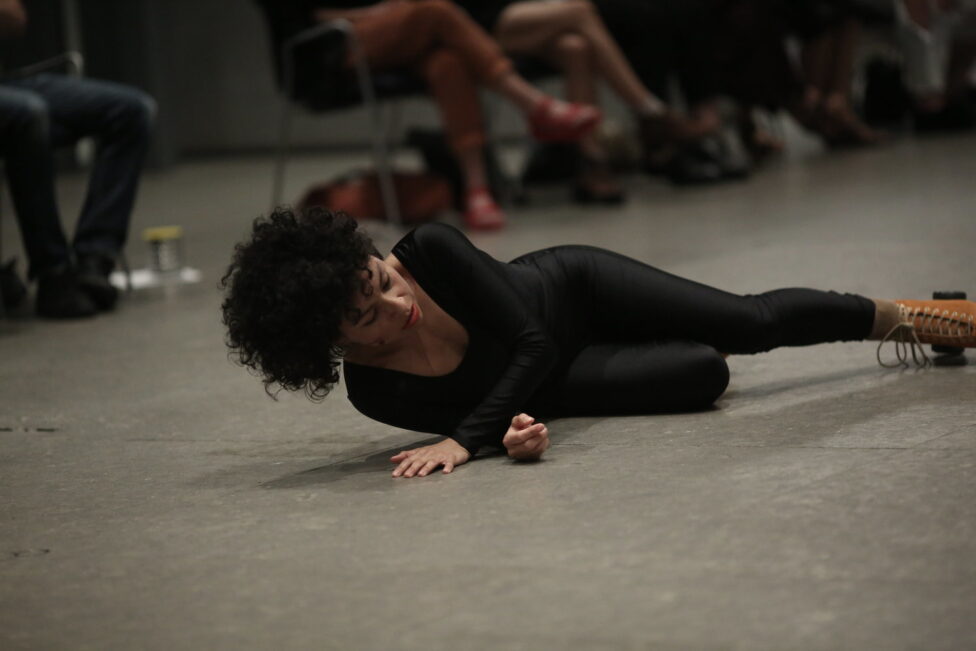
Mariana Valencia, Futurity, June 2, Whitney Biennial, 2019. Photograph © Paula Court
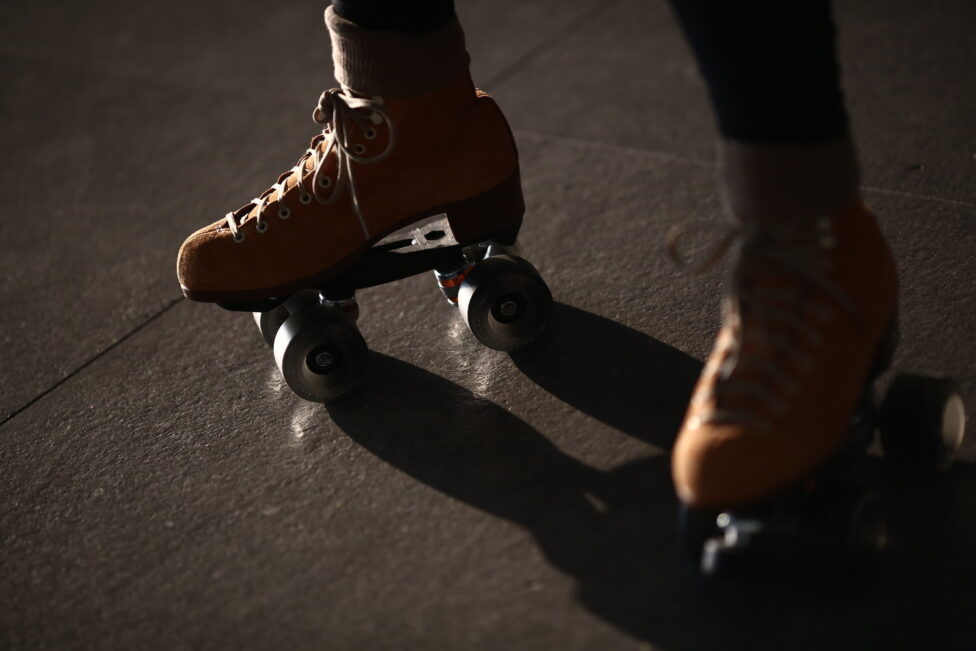
Mariana Valencia, Futurity, June 2, Whitney Biennial, 2019. Photograph © Paula Court
GH: I am curious about how you each thought about the framework of making work for the Biennial. What did it push you to think about in regards to these questions of American-ness or the way the Biennial brings this group of artists together in dialogue even though you’re not necessarily talking to each other throughout the process leading up to the opening. Are there any specifics that you can pinpoint?
NPS: Ideologically, this American-ness it’s an uncomfortable position… In my work the audience has to labor a lot if they want to understand or experience it. It is also OK for them to get bored or fall asleep and be disappointed. This disappointment relates to the reality of the Puerto Rican condition, meaning it’s always suspended. It doesn’t arrive to a certain promise. There is no completion. When I was considering what strategies to use, I decided on something that would challenge me. I had a sort of residency here for two weeks before the official performance. This gave me a lot of flexibility to reconsider actions and develop my Port Practice. I was creating an almost dance, failing at the idea of whatever the visitor or museum goer or random person arrives with… they may not think this is “dance” but, it is coming from the information I have in my body and the way I make decisions with material. While I’m working I get dirty and I figure out the site; I notice that the NYPD has barricades, I notice street lights covered with black plastic bags, I notice advertisements on floating billboards, and I notice the water and wonder about what that water means to Manhattan. I’m gathering up and responding to all of that information as I make my way closer to the museum building until I arrive to the final performance inside the theater. I’m blurring the way spaces are predisposing the viewer’s body. Is there actually a difference between the borders of the Whitney Museum lobby entrance and the borders at airports, controlled zones, or the Hudson River Park? I’m interested in the time it takes you to arrive and experience a place. I’m also taking the risk that if somebody wants to see a show and only comes to the last one, they are looking at an accumulation of fatigue and also deception. This choreography of deception and disappointment is manifested within the museum and the survey of American arts. I have been working with disappointment since 2012 or so… it all started with allowing myself to get bored. Here I’m using negation and potential impossibility; I’m not performing the thing, but using the thing.
I’m curious about the expectations of the Caribbean performer and Black performer; what is expected in terms of representation, identity. And within that allow myself to fail at those expectations and find other ways of dealing, challenging or suffering with that.
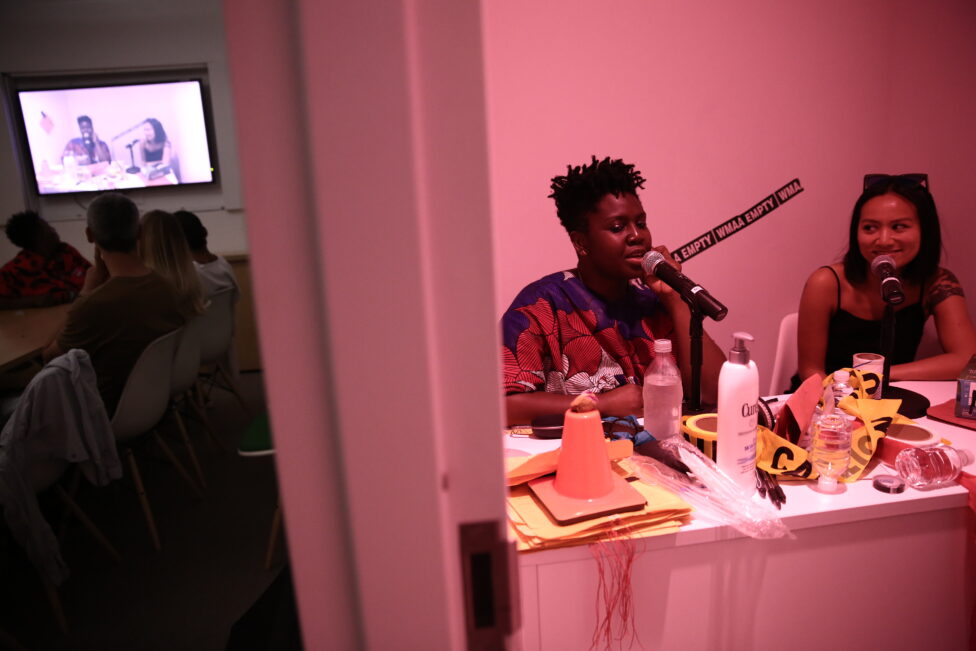
Autumn Knight, Sanity Tv, Green Room, June 29, Whitney Biennial, 2019, Photograph © Paula Court
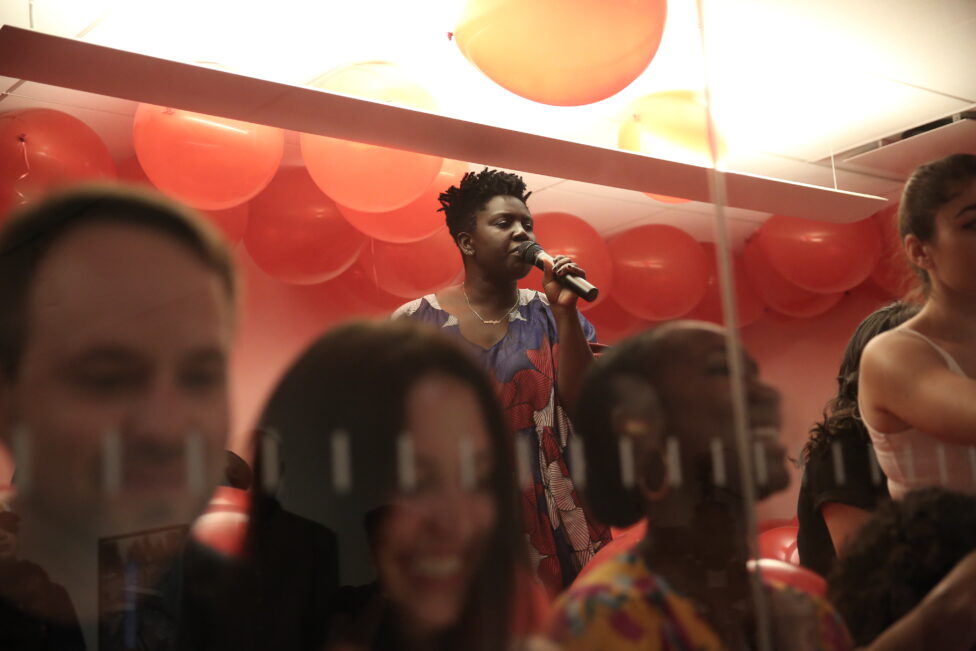
Autumn Knight, Sanity Tv, June 29, Whitney Biennial, 2019, Photograph © Paula Court
AK: I know that at some point in one of my performances at the Whitney, I will address the fact that this performance is at the Whitney Museum and happening within the Whitney Biennial. I want all of that to enter the work. I want the audience to have to acknowledge that there are expectations about this performance because of where it is (The Whitney Museum) and when it is (the Biennial). I want the audience to think around those expectations and question why they have these expectations.
GH: Every performance that I’ve worked on at my time in the Whitney has set a precedent to make more and more things permissible. Whether it is what spaces can be used or being able to get a fire permit, each performance forces a new institutional precedence. Everytime an artist is pushing farther or taking more space or asking for support in a different way, it turns the gears of the institution. Performance forces institutions to grow and adapt.
MV: Institutions don’t change by simply creating a theater. That doesn’t solve the issue of feeling included. Who decided that performance should be in a certain kind of space?
AK: They need to make room for live bodies.
MV: We don’t have space when our bodies are considered a liability to the other art in the room.
NPS: Yes, there is the protective concern of the other artwork in the gallery, but there is also concern about territory and what performance does, performance meaning the way you deal with time, content and your own body. For example, for my 5-hour outdoor performance, we had to negotiate the border between the public space and private space of the institution.
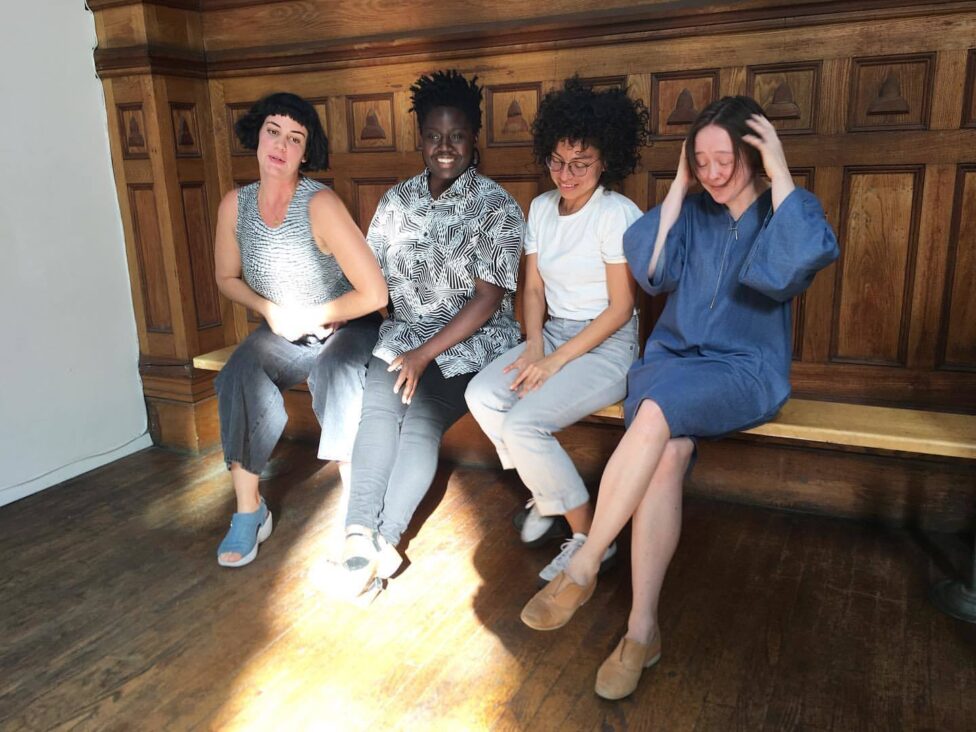
The artists would like to thank The Robert Rauschenberg Foundation who generously offered up their space for this conversation.

